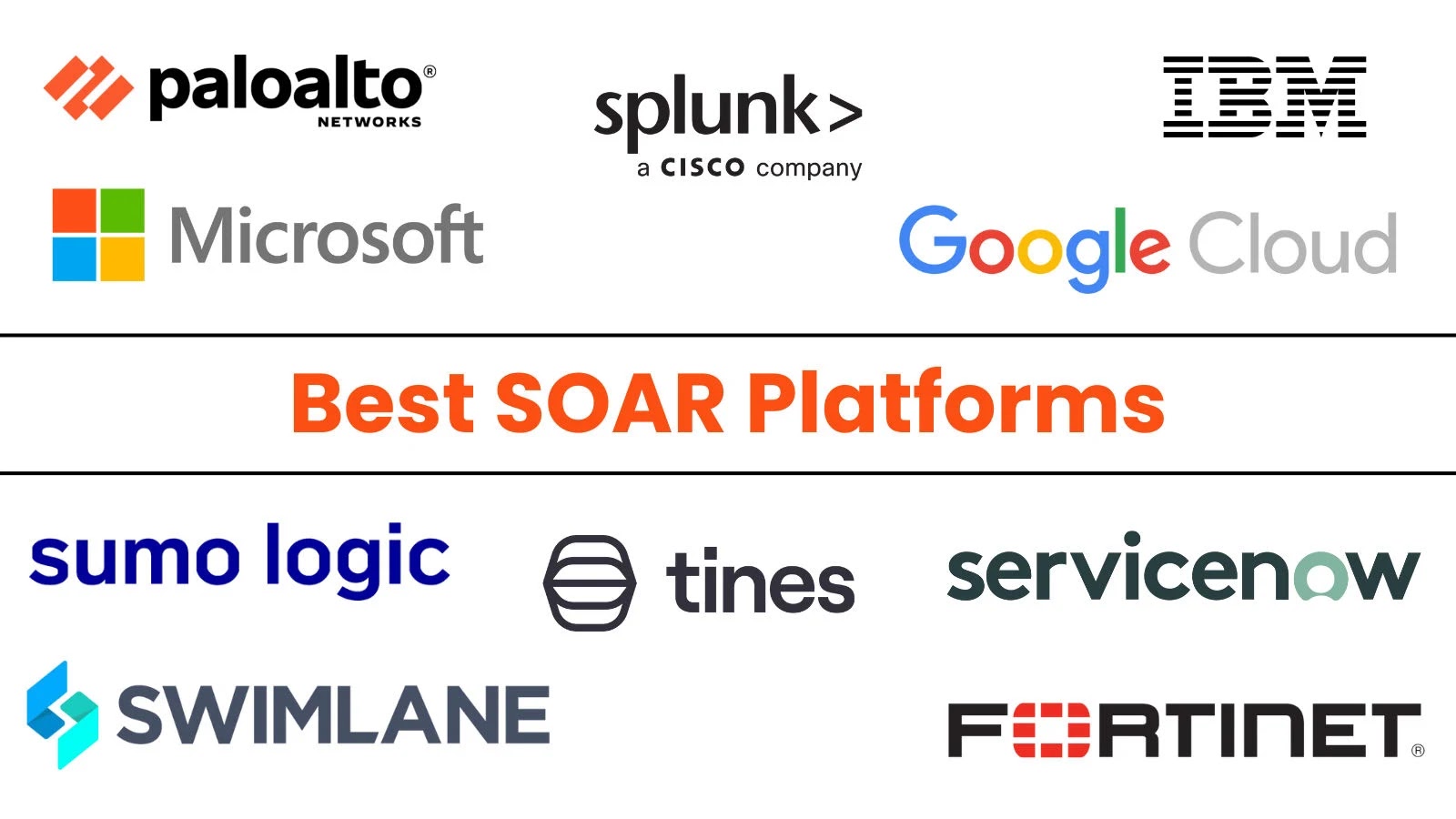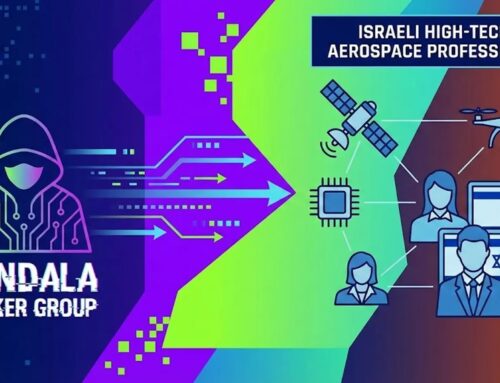
Top 10 Best Security Orchestration, Automation, And Response (SOAR) Tools in 2025
Security Operations Centers (SOCs) face an uphill battle. The sheer volume of security alerts, a persistent shortage of skilled cybersecurity professionals, and the ever-evolving sophistication of cyber threats create an environment where SOC teams are perpetually overwhelmed. This challenging landscape makes Security Orchestration, Automation, and Response (SOAR) tools not merely beneficial, but essential for modern threat defense. SOAR platforms act as a central nervous system for security operations, consolidating alerts, automating repetitive tasks, and orchestrating various security tools to work cohesively.
By streamlining incident response, enriching threat intelligence, and reducing manual effort, SOAR empowers security analysts to focus on complex, strategic problems rather than getting bogged down in routine tasks. This article delves into the top 10 SOAR tools poised to make a significant impact in 2025, providing a comprehensive overview of their capabilities and why they are critical for organizations seeking to enhance their cybersecurity posture.
Understanding SOAR: Orchestration, Automation, and Response
A SOAR platform fundamentally enhances a SOC’s efficiency by integrating three core capabilities:
- Security Orchestration: This involves connecting and coordinating disparate security tools and systems (e.g., SIEM, EDR, firewalls, threat intelligence platforms). Orchestration ensures these tools can communicate and share information seamlessly, eliminating silos and enabling a unified response.
- Security Automation: Automation focuses on executing predefined actions or workflows without human intervention. This ranges from simple tasks like blocking an IP address to complex processes like isolating an infected endpoint or enriching an alert with threat intelligence data. Automation significantly reduces response times and lessens the burden on analysts.
- Security Incident Response (SIR): SOAR tools provide robust incident management capabilities. They help analysts follow standardized playbooks, track incidents from detection to resolution, and collaboratively investigate threats. This structured approach ensures consistent and effective handling of security breaches.
Together, these elements transform a reactive security operation into a proactive, efficient, and scalable defense mechanism.
Key Benefits of Implementing SOAR Solutions
Adopting a SOAR solution offers numerous advantages for organizations battling modern cyber threats:
- Accelerated Incident Response: Automation dramatically reduces the time to detect and respond to threats, minimizing potential damage.
- Reduced Alert Fatigue: SOAR tools can automatically qualify and prioritize alerts, filtering out false positives and allowing analysts to focus on genuine threats.
- Improved Analyst Efficiency: By automating routine tasks, SOAR frees up valuable analyst time, allowing them to concentrate on complex investigations and strategic initiatives.
- Standardized Workflows: Playbooks enforce consistent incident response procedures, ensuring every incident is handled effectively and compliantly.
- Enhanced Threat Intelligence Integration: SOAR platforms seamlessly integrate with threat intelligence feeds, providing context to alerts and improving decision-making.
- Better Reporting and Metrics: Comprehensive reporting capabilities offer insights into SOC performance, incident trends, and areas for improvement.
Top 10 Best SOAR Tools in 2025
The SOAR market is dynamic, with vendors constantly innovating to address evolving threat landscapes. Here are 10 leading SOAR tools expected to be highly influential in 2025:
1. Splunk SOAR (formerly Phantom)
Splunk SOAR stands out for its robust automation capabilities and deep integration with the broader Splunk ecosystem. It offers an extensive library of playbooks and integrations, allowing organizations to automate complex workflows across various security tools. Its visual playbook editor simplifies the creation and modification of automated responses.
2. IBM Security QRadar SOAR (formerly Resilient)
IBM QRadar SOAR provides comprehensive incident response capabilities with a strong focus on compliance and regulatory requirements. Its dynamic playbooks adapt to incident specifics, guiding analysts through the response process. Integration with IBM’s extensive security portfolio, including QRadar SIEM, offers a unified security experience.
3. Palo Alto Networks Cortex XSOAR
Cortex XSOAR combines SOAR capabilities with extended security orchestration and automation, threat intelligence management, and case management. Its unique “War Room” feature facilitates collaborative incident investigation. The platform boasts a vast marketplace of integrations and sophisticated machine learning capabilities for automated analysis.
4. Swimlane SOAR
Swimlane is renowned for its highly customizable and flexible platform. It allows organizations to build bespoke automation workflows to suit their unique security operations requirements. Its low-code/no-code approach makes it accessible for security teams to develop and deploy automations without extensive programming knowledge.
5. Siemplify (now Google Cloud Security Operations)
Siemplify, acquired by Google, is known for its XDR (Extended Detection and Response) approach integrated with SOAR capabilities. It offers a powerful security operations platform that unifies security data, automates threat response, and provides advanced analytics for proactive threat hunting. Its integration with Google Cloud’s security services provides significant scalability and AI-driven insights.
6. LogicManager SOAR
LogicManager, primarily known for Governance, Risk, and Compliance (GRC), extends its capabilities into SOAR to provide a holistic view of risk management and incident response. It helps automate not only security tasks but also integrates them with broader risk management frameworks, ensuring a comprehensive approach to organizational security. While perhaps not a traditional standalone SOAR, its GRC integration is a key differentiator.
7. SIRP SOAR
SIRP focuses on simplifying complex security operations with an intuitive interface and robust automation engine. It emphasizes a structured approach to incident response with customizable playbooks and strong case management features. SIRP aims to reduce the Mean Time To Respond (MTTR) by automating repetitive tasks and streamlining analyst workflows.
8. DFLabs IncMan SOAR
DFLabs IncMan SOAR offers advanced automation and orchestration capabilities, designed to handle even the most complex incident response scenarios. Its patented “Automated Responder” analyzes incidents and suggests the most effective playbooks. IncMan also provides comprehensive evidence management and reporting for compliance and post-incident analysis.
9. CyberProof SOAR
CyberProof, as part of the UST global technology services company, offers a managed SOAR service combined with its platform. This blend helps organizations leverage SOAR capabilities without the burden of full platform management. Their SOAR platform focuses on automating security operations, correlating threats, and providing actionable insights for incident response.
10. ThreatConnect SOAR
ThreatConnect integrates threat intelligence, SOAR, and risk quantification into a single platform. It uniquely connects threat intelligence to incident response, enabling organizations to prioritize and respond to threats based on their relevance and potential impact. Its playbooks can be highly customized and driven by granular threat intelligence.
Implementing SOAR: Best Practices and Considerations
Adopting a SOAR solution requires careful planning and strategic implementation:
- Define Clear Objectives: Understand what specific security challenges you aim to solve with SOAR (e.g., reduce MTTR, automate phishing response, improve compliance).
- Start Small, Scale Gradually: Begin with automating simple, repetitive tasks with high impact before tackling more complex workflows.
- Integrate Existing Tools: Ensure the chosen SOAR platform integrates seamlessly with your current security tech stack (SIEM, EDR, firewalls, etc.).
- Develop Comprehensive Playbooks: Create detailed, well-documented playbooks for common incident types. Regularly review and update them.
- Train Your Team: Provide thorough training for security analysts on how to use the SOAR platform effectively, leveraging both automation and manual interventions.
- Measure and Optimize: Continuously monitor the performance of your SOAR implementation. Track metrics like MTTR, false positive rates, and analyst efficiency to identify areas for improvement.
Conclusion
The relentless pace of cyber threats demands a modern, efficient approach to security operations. SOAR tools are no longer a luxury but a necessity for organizations striving to maintain a resilient cybersecurity posture in 2025 and beyond. By effectively orchestrating security tools, automating routine tasks, and streamlining incident response workflows, these platforms empower SOC teams to keep pace with adversaries, reduce operational burden, and ultimately enhance overall security effectiveness. The right SOAR solution can transform a reactive and overwhelmed security team into a proactive and highly efficient defense powerhouse.





